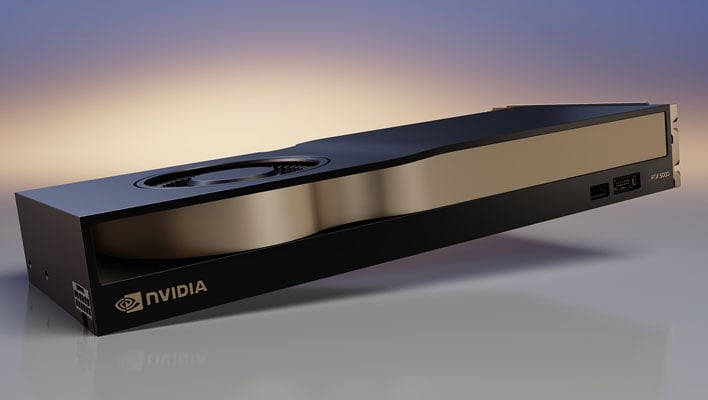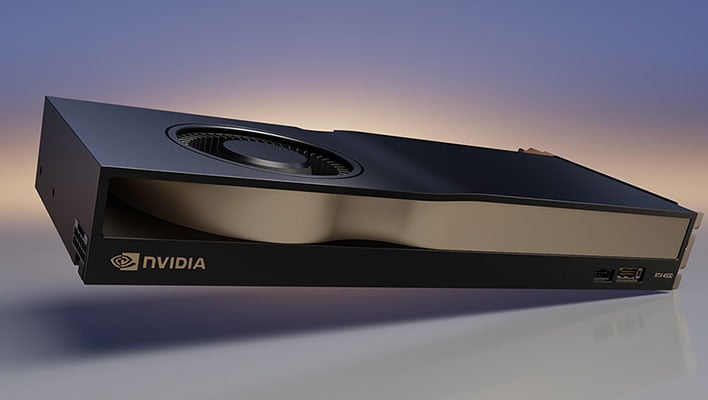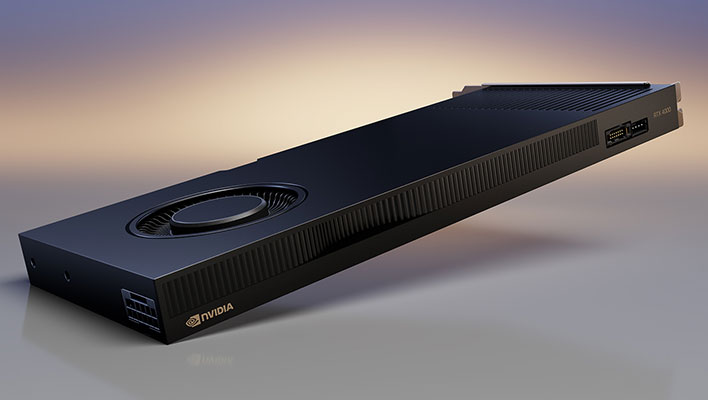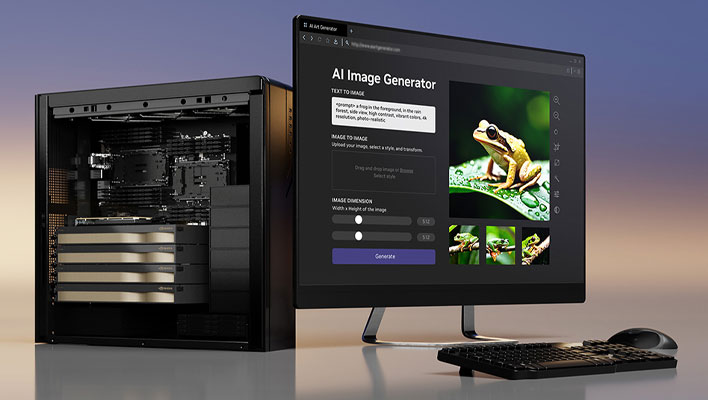NVIDIA Unveils RTX 5000, 4500 And 4000 Ada Workstation GPUs To Crush AI Workloads

SIGGRAPH 2023 has wrapped up and in addition to unveiling an upgraded version of Grace Hopper GH200 with a staggering 141GB of fast HBM3e memory, NVIDIA also expanded its lineup of workstation graphics cards for the desktop to include three new Ada Lovelace models: RTX 5000, RTX 4500, and RTX 4000. All three are sandwiched between the RTX 6000 at the top of the stack and the RTX 4000 SFF.
The anticipated expansion gives those in need of professional graphics muscle more options to choose from within NVIDIA's current-generation GPU architecture. Starting at the top of the new crop of cards, the RTX 5000 features a cut-down AD102 graphics chp with 12,800 CUDA cores to deliver 65.3 TFLOPS of single-precision performance.
It's also outfitted with 400 Tensor cores (1,044.4 TFLOPS) and 100 RT cores (151 TFLOPS), along with a heaping 32GB of GDDR6 ECC memory tied to a 256-bit bus for 576GB/s of memory bandwidth. The RTX 5000 is available now for $4,000 (MSRP).

NVIDIA RTX 4500 Ada
Next up is the RTX 4500 built around NVIDIA's full-fat AD104 GPU with 7,680 CUDA cores. Single-precision performance checks in at 39.6 TFLOPS. NVIDIA is also touting 91.6 TFLOPS of RT performance via 60 RT cores, and 634 TFLOPS of Tensor performance by way of 240 Tensor cores. And for the memory arrangement, the RTX 4500 is configured with 24GB of GDDR6 ECC on a 192-bit bus, for 432GB/s of memory bandwidth.
Look for the RTX 4500 to ship in October for $2,250 (MSRP).

NVIDIA RTX 4000 Ada
Rounding out the pack, the RTX 4000 is similar to the RTX 4000 SFF that NVIDIA released a at GTC 2023 earlier this year but in a full-height form factor. This enables more cooling potential, which is reflected in the bump to a 130W max power rating (up from 70W).
Like the small form factor variant, the full-height RTX 4000 features a cut-down AD104 GPU with 6,144 CUDA cores, 192 Tensor cores, and 48 RT cores. However, single-precision performance is pushed to 26.7 TFLOPS (up from 19.2 TFLOPS), while RT performance is bumped up to 61.8 TFLOPS (versus 44.3 TFLOPS) and Tensor performance jumps to 427.6 TFLOPS (up from 306.8 TFLOPS).
It also features the same 20GB GDDR6 ECC memory and 160-bit bus config, but with an increase in memokry bandwidth to 360GB/s (versus 280GB/s).
The RTX 4000 will be available in September for $1,250 (MSRP).

Additionally, NVIDIA announced that several hardware partners are releasing new workstations outfitted with up to four RTX 6000 Ada GPUs, each with 48GB of memory for a total of 192GB. A fully configured single workstation can crank out up to 5,828 TFLOPS of AI performance.
"Few workloads are as challenging as generative AI and digitalization applications, which require a full-stack approach to computing," said Bob Pette, vice president of professional visualization at NVIDIA. "Professionals can now tackle these on a desktop with the latest NVIDIA-powered RTX workstations, enabling them to build vast, digitalized worlds in the new age of generative AI."
The RTX workstations with up to four RTX 6000 Ada cards will be available from system builders like BOXX, Dell, HP, and Lenovo this fall.

